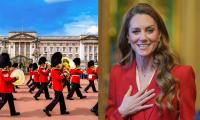Building social capital
The Framework for Economic Growth (FEG) that was approved by the National Economic Council in 2011-12 was never seriously pursued by the bureaucracy and has since fallen into disuse (never discarded through due process). It was a programme of reform for unleashing the productive potential latent in the economy. The
By Nadeem Ul Haque
February 11, 2015
The Framework for Economic Growth (FEG) that was approved by the National Economic Council in 2011-12 was never seriously pursued by the bureaucracy and has since fallen into disuse (never discarded through due process). It was a programme of reform for unleashing the productive potential latent in the economy. The FEG importantly noted the development of the much neglected area of “social capital” as an important cornerstone of the reform programme.
‘Social capital’ is the potential for collective action among groups and individuals in society. It implies a high degree of trust, networking ability and capacity for teamwork and collaboration. For example it was the collaboration capacity among the US research and university system that gave birth to the internet. The industrial revolution and the success of Europe in attaining economic advancement and conquering the world has been attributed to the development of a network of merchant towns and collaborative science across western Europe.
In Pakistan relationship capital exists sometimes in ‘biradaris’ and in extended family contexts. The level of trust and collaboration outside such historical relationships remains low. This is severely limiting as large ventures require high levels of social capital. Historically trust networks led to the development of long-distance partnerships and joint stock companies that were able to leverage way beyond local jurisdictions and conquer the world.
How did Europe develop social capital, and we despite our many claims to history manifested so well in our monuments could not create an East India Company or Royal Society or a stock exchange? Broadly speaking, the answer is found in the development of the urban middle class that had cut its rural roots and developed new forms of associations such as clubs, trade and professional guilds, schools, universities and many other forms of collaboration. English public schools through conscious development of an esprit de corps, discipline and team sports prepared the company administrators who ruled us for over 200 years.
While we have learnt to pay lip-service to enrolment ratios and school attendance of low quality literacy, we have yet to learn the value of social capital. Even when we do complete school or college, questions remain about the attitude towards discipline, collaboration, responsibility and accountability. If our leaders are any evidence of this we can certainly see that all elements of social capital are at very low levels.
My dream in the FEG was for it to take some initiative for social capital. I knew big steps were difficult for indeed the level of comprehension in the cabinet and among ministers was very low. And presenting the framework in the cabinet confirmed this collective comprehension deficit. All they wanted was the ‘fat’ in their projects.
Several approaches are needed. The one I tried to initiate was something like this: I dreamt of an innovative community centre in every urban locality (mohala). The premise was something like this. A place where the whole family can come in and actively engage in creativity, teamwork and knowledge development etc with neighbours etc. In some sense this would be better than sending children only to school. The involvement of parents and the whole family could set up currents and eddies of knowledge, creativity, collaboration and more that would cultivate children way beyond our deficient education system.
The community centre must be a very attractive, flexible space that adapts to various needs and facilitates all manner of activities. One such configuration is a six-storey building. If possible land in front of the property (1/2 an acre) would be dedicated to a flexible playground with volleyball, basketball, badminton etc.
A basement would contain auditoriums and meeting rooms that for a nominal fee could be booked for meetings and events.
Floor 1 would have a subsidised cafeteria and coffee houses for people to sit and chat in. Such places have been shown to be great for development of ideas, innovation and networking among people. Floor 2 would be a flexible space dedicated to women’s activities such as games, support groups, self-help, learning etc.
Floor 3 would be a similar flexible space to organise men’s activities of various kinds. Floor 4 could be a similar flexible space for the whole family to engage in activities together.
Floor 5 would be a library and networking space with high speed net access. Floor 6 would be dedicated to net learning where Khan Academy and MOOCs would be organised in sessions to draw the whole family in.
(Important caveat: the DMG would have to allow the height restriction because this cannot be done on the kind two-storey building that they love.)
The point is to create a space where families can be involved in creative interaction and play. The different spaces should allow enough activities to attract all in the family at different levels.
How do we manage all this? On each floor there will be counsellors who will try to guide and develop activities in collaboration with active participants. The counsellors should be handpicked to be the brightest young people, graduates of our finest universities and fresh graduates of foreign universities. They would be given a good salary with a two to three-year tenure. More importantly this should be a challenge for them and they should be ranked on a competitive basis. Experience at these centres and a positive recommendation should be a big plus in their future ventures.
The counsellors and their creativity would be an important cornerstone of this programme. Activities could be competitive such as creative games, fitness programs, talks, internet activities, Khan Academy and MOOC courses etc. Groups of counsellors would meet and share experiences within the centre every week and across centres every month.
How do we finance it and recruit members? My view is that the centre should be on a membership basis although there should be a government subsidy for developing community spirit and social capital. Yet a membership charge and some activity fee would help select more serious, interested people. But the membership should not be like our elite clubs where it becomes friends and relatives only. The government subsidy should ensure it is for everyone and not just some select segment.
This is just one initiative for building social capital. If we have a string of these centres embedded in the community a large number of people will develop a variety of skills and knowledge. More importantly, the process is likely to lead to a lot of innovation and further development of the theme. Social capital will develop as a result of this positive feedback.
What a pity,this was not allowed to happen. Worse still, it never will happen.
The writer is former deputy chairman of the Planning Commission.
Email: nhaque_imf@yahoo.com
Twitter: @nadeemhaque
‘Social capital’ is the potential for collective action among groups and individuals in society. It implies a high degree of trust, networking ability and capacity for teamwork and collaboration. For example it was the collaboration capacity among the US research and university system that gave birth to the internet. The industrial revolution and the success of Europe in attaining economic advancement and conquering the world has been attributed to the development of a network of merchant towns and collaborative science across western Europe.
In Pakistan relationship capital exists sometimes in ‘biradaris’ and in extended family contexts. The level of trust and collaboration outside such historical relationships remains low. This is severely limiting as large ventures require high levels of social capital. Historically trust networks led to the development of long-distance partnerships and joint stock companies that were able to leverage way beyond local jurisdictions and conquer the world.
How did Europe develop social capital, and we despite our many claims to history manifested so well in our monuments could not create an East India Company or Royal Society or a stock exchange? Broadly speaking, the answer is found in the development of the urban middle class that had cut its rural roots and developed new forms of associations such as clubs, trade and professional guilds, schools, universities and many other forms of collaboration. English public schools through conscious development of an esprit de corps, discipline and team sports prepared the company administrators who ruled us for over 200 years.
While we have learnt to pay lip-service to enrolment ratios and school attendance of low quality literacy, we have yet to learn the value of social capital. Even when we do complete school or college, questions remain about the attitude towards discipline, collaboration, responsibility and accountability. If our leaders are any evidence of this we can certainly see that all elements of social capital are at very low levels.
My dream in the FEG was for it to take some initiative for social capital. I knew big steps were difficult for indeed the level of comprehension in the cabinet and among ministers was very low. And presenting the framework in the cabinet confirmed this collective comprehension deficit. All they wanted was the ‘fat’ in their projects.
Several approaches are needed. The one I tried to initiate was something like this: I dreamt of an innovative community centre in every urban locality (mohala). The premise was something like this. A place where the whole family can come in and actively engage in creativity, teamwork and knowledge development etc with neighbours etc. In some sense this would be better than sending children only to school. The involvement of parents and the whole family could set up currents and eddies of knowledge, creativity, collaboration and more that would cultivate children way beyond our deficient education system.
The community centre must be a very attractive, flexible space that adapts to various needs and facilitates all manner of activities. One such configuration is a six-storey building. If possible land in front of the property (1/2 an acre) would be dedicated to a flexible playground with volleyball, basketball, badminton etc.
A basement would contain auditoriums and meeting rooms that for a nominal fee could be booked for meetings and events.
Floor 1 would have a subsidised cafeteria and coffee houses for people to sit and chat in. Such places have been shown to be great for development of ideas, innovation and networking among people. Floor 2 would be a flexible space dedicated to women’s activities such as games, support groups, self-help, learning etc.
Floor 3 would be a similar flexible space to organise men’s activities of various kinds. Floor 4 could be a similar flexible space for the whole family to engage in activities together.
Floor 5 would be a library and networking space with high speed net access. Floor 6 would be dedicated to net learning where Khan Academy and MOOCs would be organised in sessions to draw the whole family in.
(Important caveat: the DMG would have to allow the height restriction because this cannot be done on the kind two-storey building that they love.)
The point is to create a space where families can be involved in creative interaction and play. The different spaces should allow enough activities to attract all in the family at different levels.
How do we manage all this? On each floor there will be counsellors who will try to guide and develop activities in collaboration with active participants. The counsellors should be handpicked to be the brightest young people, graduates of our finest universities and fresh graduates of foreign universities. They would be given a good salary with a two to three-year tenure. More importantly this should be a challenge for them and they should be ranked on a competitive basis. Experience at these centres and a positive recommendation should be a big plus in their future ventures.
The counsellors and their creativity would be an important cornerstone of this programme. Activities could be competitive such as creative games, fitness programs, talks, internet activities, Khan Academy and MOOC courses etc. Groups of counsellors would meet and share experiences within the centre every week and across centres every month.
How do we finance it and recruit members? My view is that the centre should be on a membership basis although there should be a government subsidy for developing community spirit and social capital. Yet a membership charge and some activity fee would help select more serious, interested people. But the membership should not be like our elite clubs where it becomes friends and relatives only. The government subsidy should ensure it is for everyone and not just some select segment.
This is just one initiative for building social capital. If we have a string of these centres embedded in the community a large number of people will develop a variety of skills and knowledge. More importantly, the process is likely to lead to a lot of innovation and further development of the theme. Social capital will develop as a result of this positive feedback.
What a pity,this was not allowed to happen. Worse still, it never will happen.
The writer is former deputy chairman of the Planning Commission.
Email: nhaque_imf@yahoo.com
Twitter: @nadeemhaque
-
 Prince Harry All Set To Return To Britain Next Week?
Prince Harry All Set To Return To Britain Next Week? -
 Is Princess Charlotte Becoming Most Confident Young Royal?
Is Princess Charlotte Becoming Most Confident Young Royal? -
 ‘Stranger Things’ Star David Harbour Speaks Up About ‘psychotherapy’
‘Stranger Things’ Star David Harbour Speaks Up About ‘psychotherapy’ -
 Jennifer Love Hewitt Talks About Scary 9-1-1 Episode
Jennifer Love Hewitt Talks About Scary 9-1-1 Episode -
 Kate Middleton Ditches Palace Life For Where She 'truly Relaxes'
Kate Middleton Ditches Palace Life For Where She 'truly Relaxes' -
 Pixel Watch May Soon Warn You If You Leave It Behind
Pixel Watch May Soon Warn You If You Leave It Behind -
 Serious Liver Scarring Shows Potential To Be Reversed With Latest Drug
Serious Liver Scarring Shows Potential To Be Reversed With Latest Drug -
 Elon Musk Backs Donald Trump To Invoke Insurrection Act Amid Minnesota Protests
Elon Musk Backs Donald Trump To Invoke Insurrection Act Amid Minnesota Protests -
 Scientists Unravel Mystery Of James Webb’s ‘little Red Dots’ In Deep Space
Scientists Unravel Mystery Of James Webb’s ‘little Red Dots’ In Deep Space -
 Nano Banana Explained: How Google’s AI Got Its Name
Nano Banana Explained: How Google’s AI Got Its Name -
 Fire Causes Power Outage On Tokyo Train Lines, Thousands Stranded As ‘operations Halted’
Fire Causes Power Outage On Tokyo Train Lines, Thousands Stranded As ‘operations Halted’ -
 YouTube, BBC To Ink Landmark Deal To Launch Exclusive Bespoke Shows
YouTube, BBC To Ink Landmark Deal To Launch Exclusive Bespoke Shows -
 Meghan Markle Turning Prince Harry's Invictus Games Event Into 'bad Fashion Show'
Meghan Markle Turning Prince Harry's Invictus Games Event Into 'bad Fashion Show' -
 TikTok To Roll Out New Age Detection Technology Across Europe
TikTok To Roll Out New Age Detection Technology Across Europe -
 Tom Brady Explains How Divorce With Gisele Bündchen Affected His NFL Career
Tom Brady Explains How Divorce With Gisele Bündchen Affected His NFL Career -
 Taiwan, TSMC To Expand US Investment: A Strategic Move In Global AI Chip Race
Taiwan, TSMC To Expand US Investment: A Strategic Move In Global AI Chip Race



